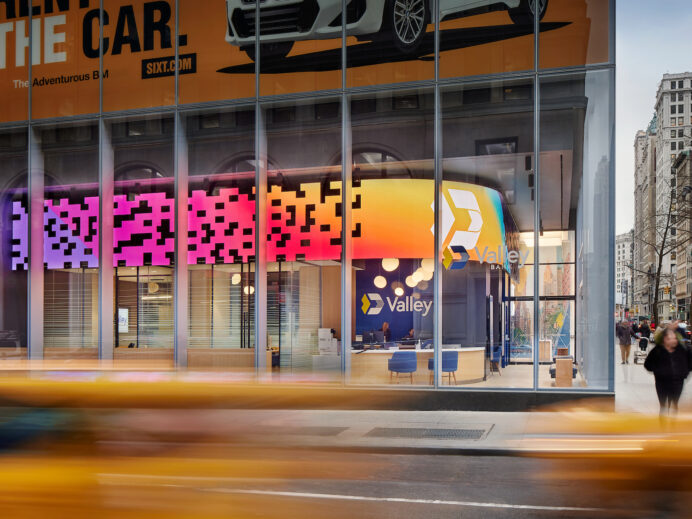
As more transactions move online, bank branches and retail stores alike are expecting even less foot traffic to their locations in the coming months.
However for many brands, there is no replacement for the physical presence a bank branch or retail store can provide. In banking for example, routine activities like deposits and withdrawals may be moving to automated solutions, but much of the higher value consultative services financial services is known for – like mortgage lending and business banking – are still taking place primarily in-person at the branch. With fewer visits, it’s more important than ever to make the most of every interaction while consumers are in the local branch setting.
In-store and in-branch technology like dynamic signage can help brands bridge the digital and physical worlds. By creating a seamless brand experience for consumers, digital signage is one element in creating a coordinated, cohesive customer journey through synchronizing online, mobile and in-person interactions. In a cost-effective manner, this engagement tool empowers the bank brand to serve up meaningful programming that’s targeted and tailored to its local consumer base. Focused on optimizing in-store and in-branch communications, well-programmed playlists maximize dwell time and influence customer beliefs and behaviors.
Branch of the Future
One of the buzzwords in banking is innovation, specifically related to “Branch of the Future” initiatives. With some banking locations, consumers will find branches that are heavy on the bells-and-whistles and light on the analytics to back them up. Retail also has its own “Store of the Future” projects which face some of the same challenges. What consumers find inside these branches are tech tools like interactive touch screens instead of well-programmed digital signage. Thinking that a branch should replicate the machine learning that’s driving mobile and online experiences, financial brands may be tempted to use this type of personalization rolled out on a mass scale in the branch setting.
What those advocating this type of technology deployment may not have considered is that interactive touch screens housed in public spaces will almost always be underutilized. Banking is personal and consumers are understandably reticent to have their private financial information beamed onto a public screen. Further, when consumers are on their smartphones or tablets, they’re generally comfortable with more and better suggestions coming to them, because the technology being iterated is based on a singular, one-to-one relationship between the consumer and brand. When people try to apply that same thinking in the branch environment – which is a point to multipoint environment – it is mostly misaligned.
Another technology being rolled out in these “Branch of the Future” environments is beacons connected to digital screens. Also machine learning based, these beacons or wireless access points are programmed with facial recognition, so that when a person walks by the screen, an ad is served up based on a profile programmed into the software. The issue with this approach to digital signage is determining which people in a teller line the screen should be reacting to. Again, the type of one-to-one experience this technology is trying to replicate cannot be effectively deployed in a public group environment, like a bank branch. But if these in-store technologies aren’t effective, what is?
Right-Sizing Messaging
Instead of chasing the “immersive experience” shiny object, one of the most effective ways to develop and deploy digital signage is for brands to do a deep dive into branch-by-branch or store-by-store audience analytics first. Understanding who is coming into a location and what they are there to do is central to creating brand messaging that will resonate with them. Once gathered with a deep level of specificity, audience analytics and insights can then be translated into powerful personas and archetypes. These identifiable audience characteristics and needs states allow brands to cultivate a holistic communications strategy from which messaging playlists can be developed.



